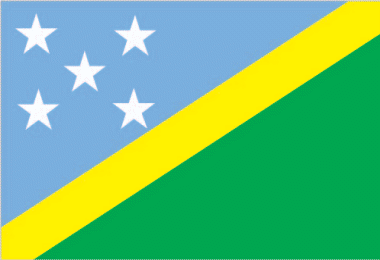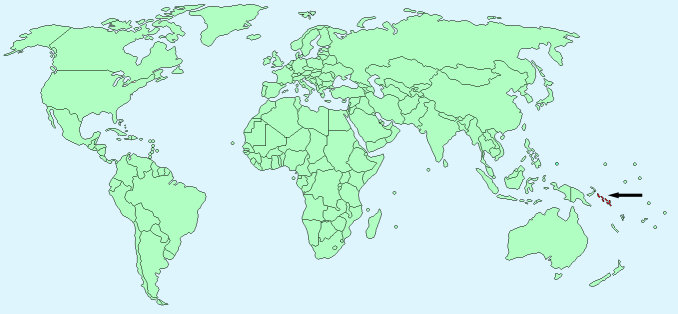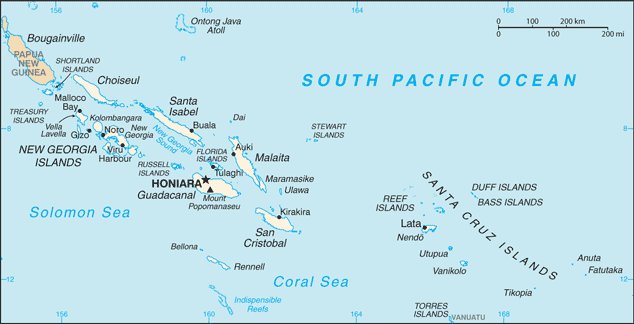Solomon Islands


Continent – Australasia, Oceania
Region – Oceania
Size – 28,896 km²
Geography – rugged mountains and coral atolls
Language – Melanesian pidgin, English, indigenous languages
Religion – Protestant 73.4, Roman Catholic 19.6%, other or unspecified 7%
Monetary Unit – Solomon Islands Dollar
Natural Resources – fish, forests, gold, bauxite, phosphates, lead, zinc, nickel
Agriculture – cocoa, coconuts, palm kernels, rice, fruit; cattle, pigs; fish; timber
Industry – fish, mining, timber

Neighbouring Countries – None
Population – 622,469 (2015 estimate)
Population Growth Rate – 2.02%
Average Life Expectancy – 75.12 years
Capital City – Honiara (73,000)
Highest Mountain – Mount Popomanaseu (2,310m)
Longest River – No significant rivers
Climate – tropical, humid climate 25°C to 32°C
Yearly Rainfall – 305cm (approx)
Plant Life – mangroves, coconut, orchids, ginger, begonia, sago palm,
Animal Life – crocodile, bats, rats, mice, frogs, lizards, snakes, toads, scorpions
Bird Life – Red Knobbed Imperial Pigeon, Solomon eagle, incubator bird, white-eyes, fantails, rails, thrushes, parrots
Harvard Reference for this page:
Heather Y Wheeler. (2016). Solomon Islands. Available: https://www.naturalhistoryonthenet.com/Facts_Figures/Country_Facts/solomon_islands.htm. Last accessed Tuesday, July 19, 2016
Facts and Figures Pages
